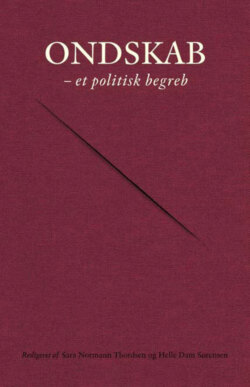Читать книгу Ondskab - Группа авторов - Страница 12
Litteratur
ОглавлениеAdorno, Theodor Wissengrund (1973): Negative Dialectics. New York: Continuum.
Agamben, Giorgio (1998): Homo Sacer. Sovereign Power and Bare Life. Standford: Standford University Press.
Agamben, Giorgio (1999): Remnants of Auschwitz. The Witness and the Archive. New York: Zone Books.
Appelfeld, Aharon (1988): “After the Holocaust” in Berel Lang (red.), Writing and the Holocaust. New York: Holmes & Meier. Pp. 83-92.
Arendt, Hannah (1973): The Origins of Totalitarianism. San Diego: Harcourt Brace & Company.
Arendt, Hannah (1992): Eichmann in Jerusalem – A Report on the Banality of Evil. London: Penguin Books.
Arendt, Hannah (1993): Essays in Understanding. New York: Harcourt Brace.
Ben-Ghiat, Ruth (2001): “The Secret Histories of Roberto Benigni’s Life is Beautiful”. The Yale Journal of Criticism, 14 (1): 253-266.
Benigni, Roberto & Vincenzo Cerami (1999): Life is Beautiful. London: Faber & Faber.
Celli, Carlo (2000): “The Representation of Evil in Roberto Benigni’s Life is Beautiful”. Journal of Popular Film and Television, 28 (2): 74-79.
Denby, David (1999): “In the Eye of the Beholder. Another look at Roberto Benigni’s Holocaust fantasy”. The New Yorker, marts (hæfte 15): 96-99.
Des Pres, Terrence (1980): The Survivor: An Anatomy of Life in the Death Camps. Oxford: Oxford University Press.
Ezrahi, Sidra DeKoven (2001): “After Such Knowledge, What Laughter?”. Yale Journal of Criticism, 14 (1): 287-313.
Flanzbaum, Hilene (2001): “But Wasn’t it Terrific? A Defense of Liking Life is Beautiful”. The Yale Journal of Criticism, 14 (1): 273-286.
Frankl, Victor E. (1984): Man’s Search for Meaning. New York: Washington Square.
Haskins, Casey (2001): “Art, Morality, and the Holocaust: The Aesthetic Riddle of Benigni’s Life is Beautiful”. Journal of Aesthetics and Art Criticism, 59 (4): 373-384.
Hilberg, Raul (1988): “I Was Not There” in Berel Lang (red.), Writing and the Holocaust. New York: Holmes & Meier. Pp. 17-25.
Kertész, Imre (2001): “Who Owns Auschwitz?”. Yale Journal of Criticism, 14 (1): 267-272.
Lyotard, Jean-François (1988): The Differend: Phrases in Dispute. Manchester: Manchester University Press.
Rose, Gillian (1993): Judaism and Modernity, Philosophical Essays. Cambridge: Blackwell.
Seeskin, Kenneth (1988): “Coming to Terms with Failure: A Philosophical Dilemma” in Berel Lang (red.), Writing and the Holocaust, New York: Holmes & Meier. Pp. 110-121.
Siporin, Steve (2002): “Life is Beautiful: four riddles, three answers”. Journal of Modern Italian Studies, 7 (3): 345-363.
Spiegelman, Art (1992): Maus II. En overlevende fortæller. København: Politisk Revy.
Stark, Jared (2001): “Suicide After Auschwitz”. Yale Journal of Criticism, 14 (1): 93-114.
Tatara, Paul (1998): “Unbelievable optimism in ‘Life is Beautiful’”. Downloaded den 22. juni 2007 fra: CNN.com/showbiz/movies/9811/10/review.lifeisbeautiful/.
Trezise, Thomas (2001): “Unspeakable”. Yale Journal of Criticism, 14 (1): 39-66.
Viano, Maurizio (1999): “Life is Beautiful: Reception, Allegory, and Holocaust Laughter”. Jewish Social Studies, 5 (3): 47-66.
Žižek, Slavoj (2001): Did Somebody Say Totalitarianism? Five Interventions in the (Mis)use of a Notion. London: Verso.
